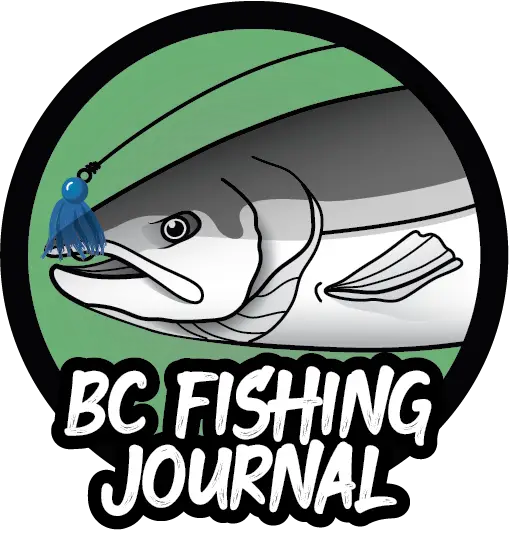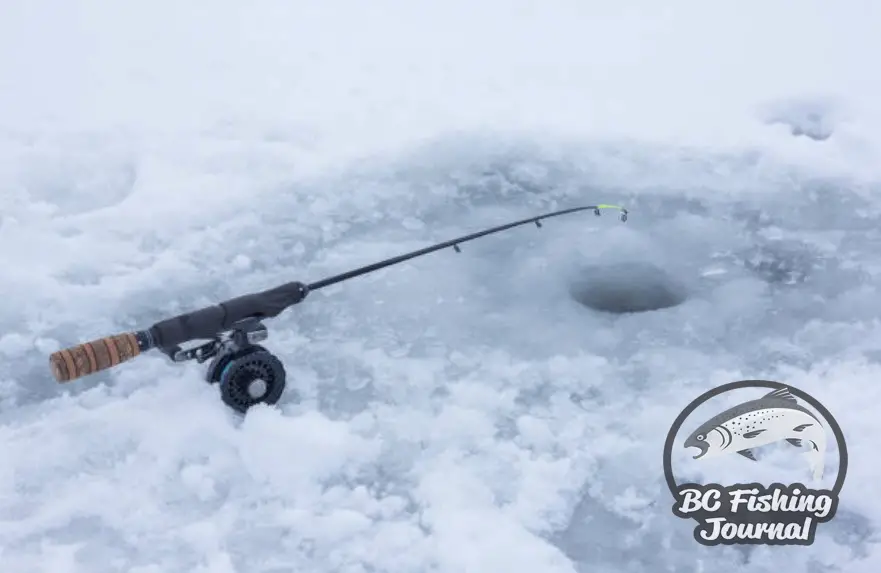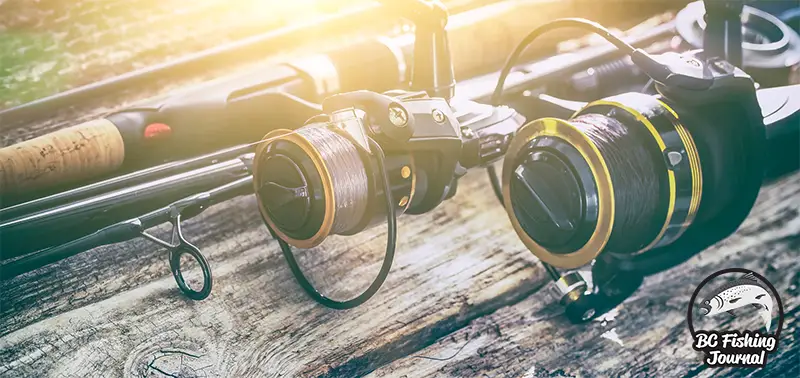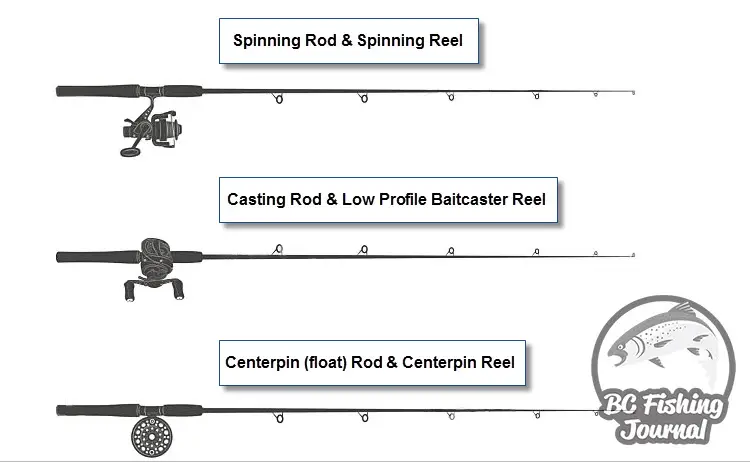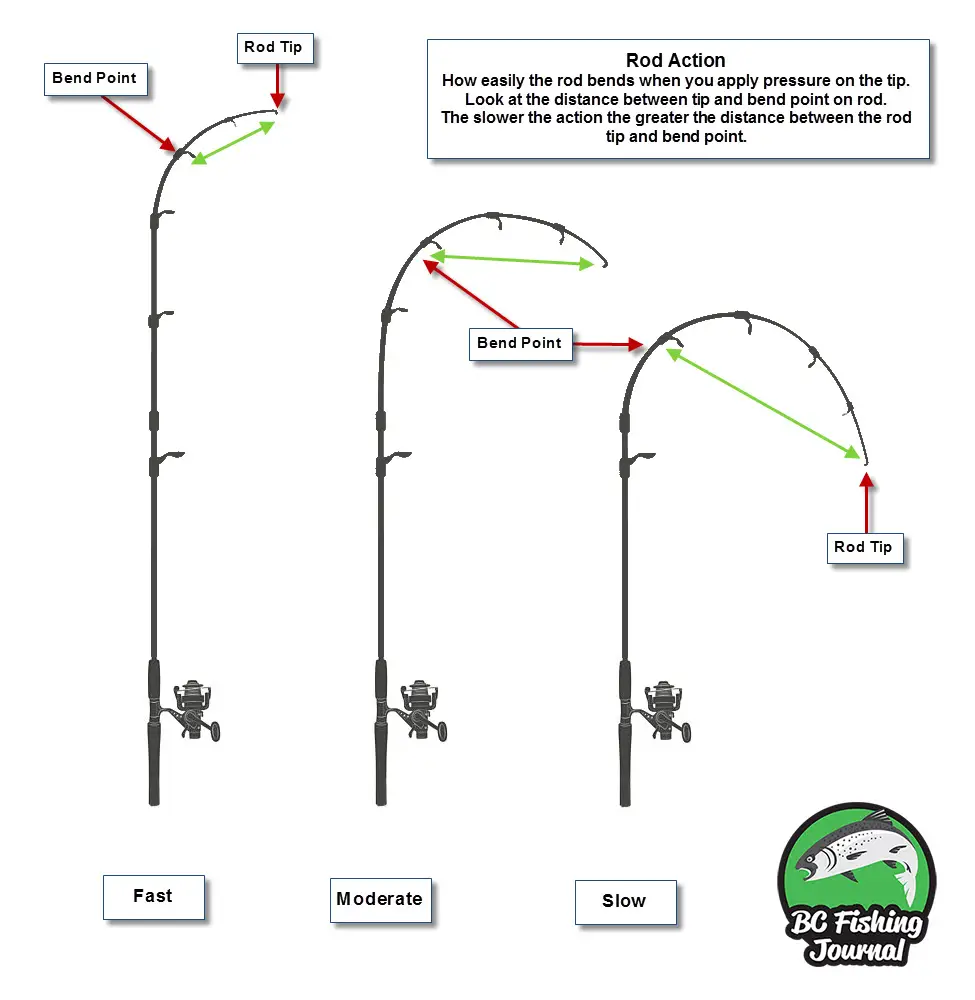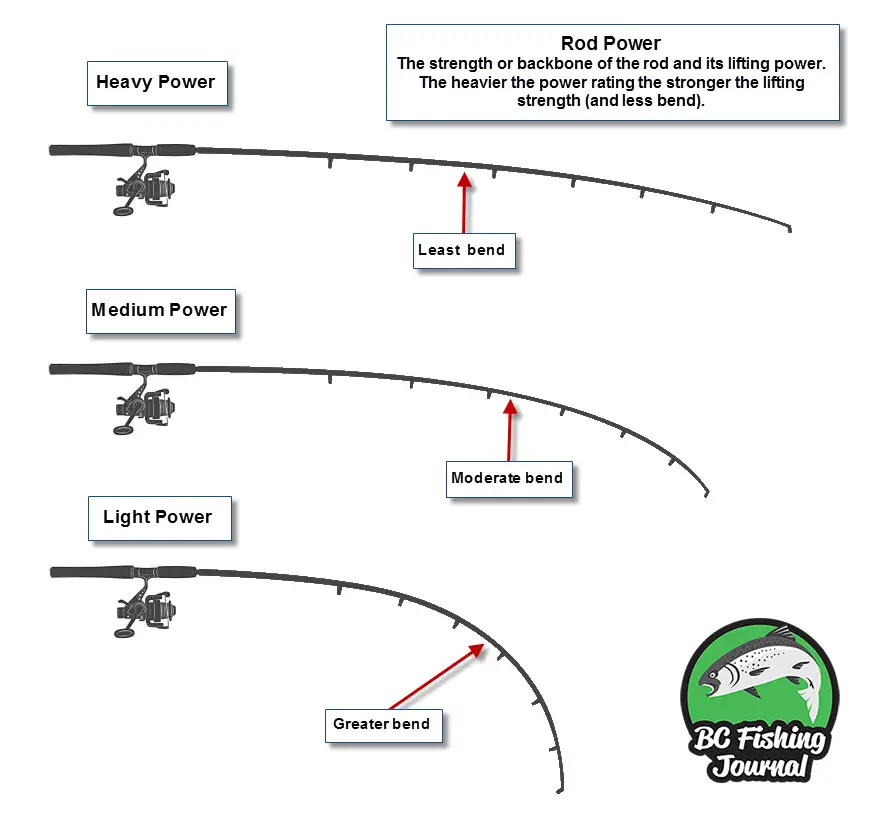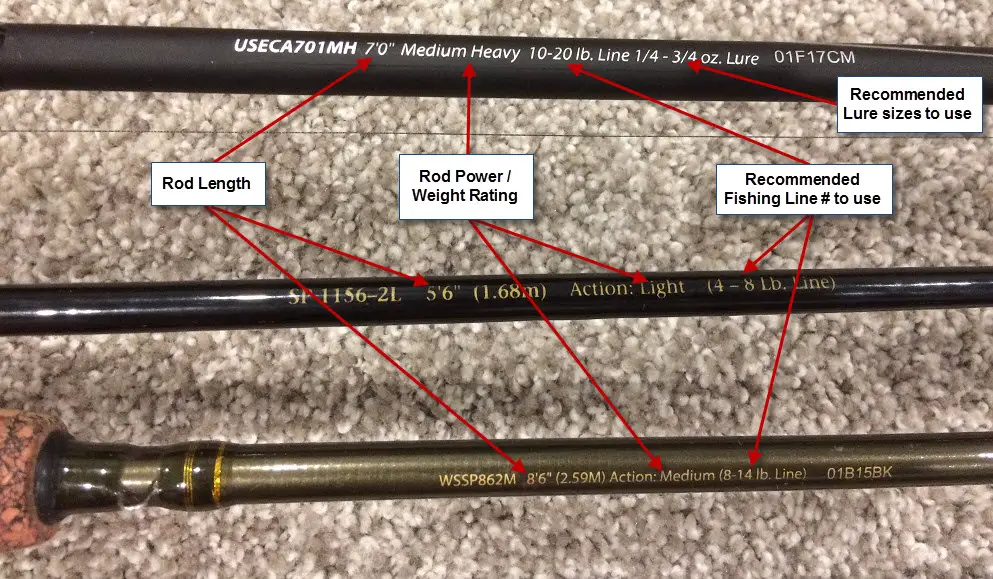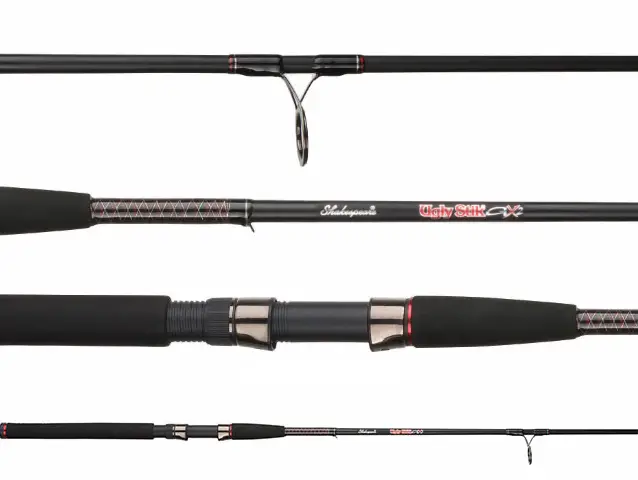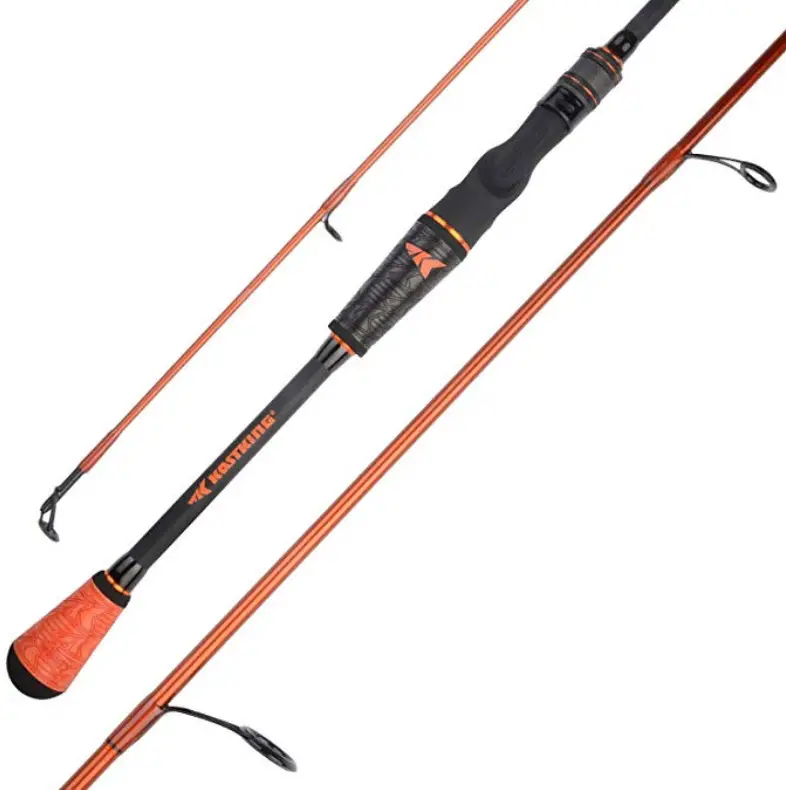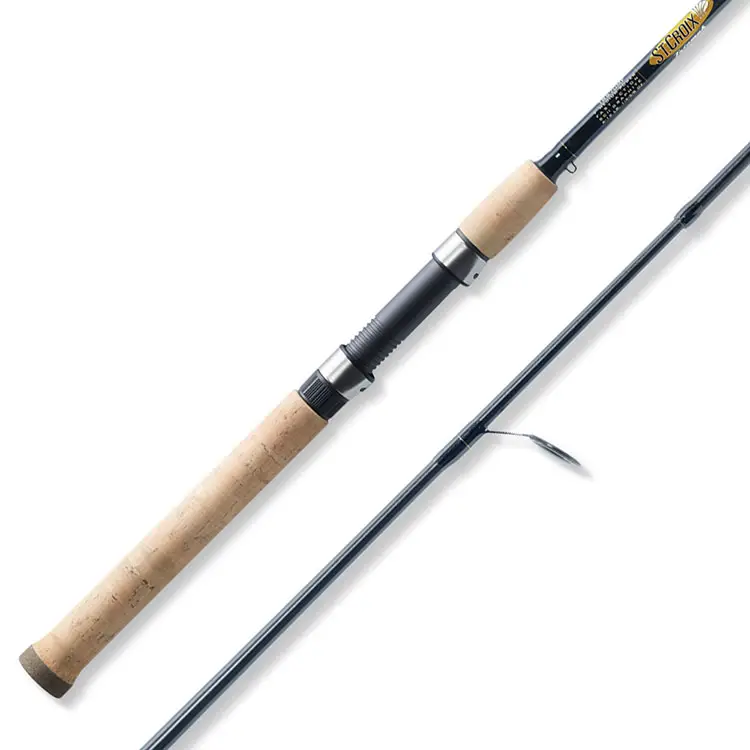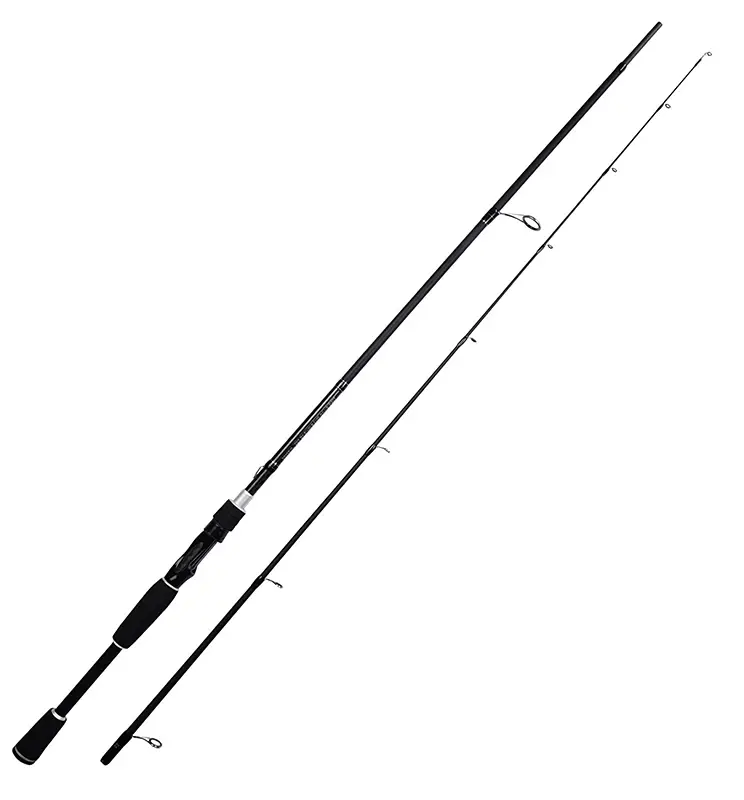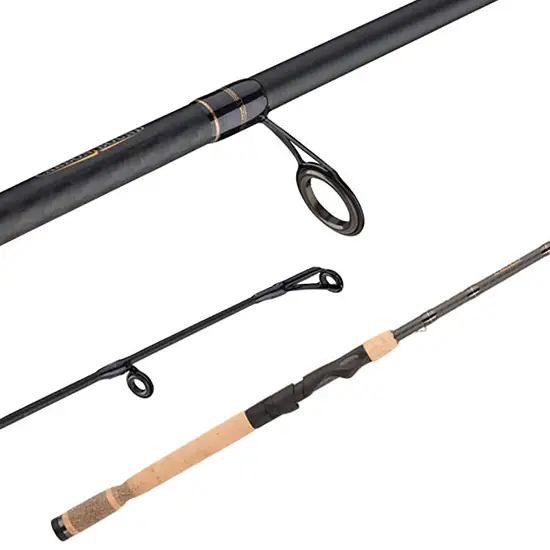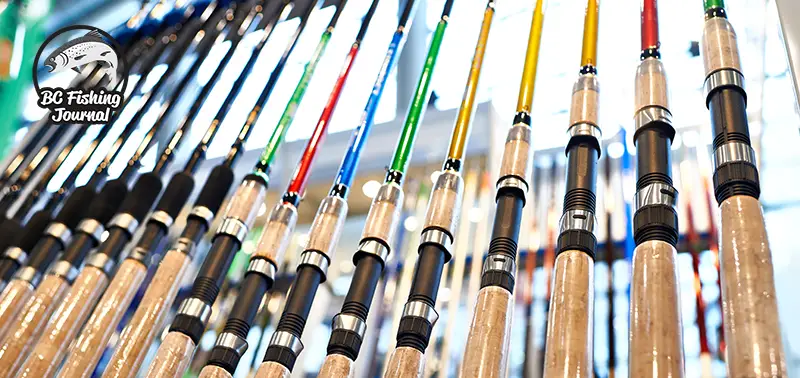
Tackle Guide: Best Spinning Rods for 2024
First off, there is a bunch of information on fishing rods in this article from beginner to advanced. If you’re looking for the best spinning rod recommendations skip the initial educational sections and jump down to the best spinning rod reviews. However, if you’re a new angler or looking to learn more about fishing rods check out the top educational section where I’ve included information on rod action, power rating, types and more.
With so many styles of fishing rods: spinning, casting, surf, mooching, surf, tenkara, etc this tackle guide focuses on Spinning rods. These are the most widely used rods by anglers today. Paired with spinning reels they are the easiest to use and very versatile for a number of fishing scenarios. This article details the top recommendations for spinning rods including the best bang for your buck rods. Let’s get to it!
The Best Spinning Rods for the Money
Spinning Rod
Rod Length Ranges
Power Ratings
Our Score
What are the different types of Fishing Rods
In this section we’re distinguishing between 3 different rod types: Spinning, Casting & Centerpin (Float) rods. Of course this is not exclusive as there are many more different types of rods like: Fly, Telescopic, Surf, Ice fishing, Trolling, Tenkara, Mooching, etc.
The biggest difference between spinning and casting rods is where the guides (and reel) sit. On a spinning rod the guides are located on the bottom of the rod (hang off bottom), likewise the spinning reel hangs below as well. A casting rod the guides are located on the top of the rod as well as the baitcaster reel or spincast reel.
The centerpin rod also called a float fishing rod looks mimics the spinning rod with the guides and reel hanging on the bottom, but is usually 30%-50% longer (averaging between 9-12 feet long). Essentially, it’s like a spinning (or fly) rod on steroids.
What is the Fishing Rod Action?
Each rod has an action rating, this is rating defines how easily the rod bends when you apply pressure on the tip. Another way to think of this rating is the speed to which the rod tip returns to its neutral/straight position after the pressure is gone. A rod with a greater bend takes longer to return to a neutral position vs. a rod with a lesser bend. This means that a rod with a greater bend will have a slower action rating.
Another way I like to define the rod action rating is looking at the distance between the rod tip and the bend point. The longer the distance, the slower the action. And vice versa, the shorter the distance the faster the action. See the diagram of the 3 actions I’ve outlined to better explain this.
The diagram outlines the 3 most common action ratings:
- Fast
- Moderate / Medium
- Slow
Although, these are the most common they are not the only ratings. Rods will offer ratings that fall in between these 3 or faster or slower than the extremes. For example, Extra-Fast, Extra-Slow, Medium-Slow, etc.
What is the Fishing Rod Power Rating?
A rod’s power rating (also called the weight rating) is the backbone strength of the rod. Power measures the lifting strength of the rod and the amount of flex/bend that occurs closest to the handles. The heavier the rating the stronger the backbone and less bend in the rod. And vice versa, the lighter the rating the rod the lesser the lifting strength (and greater bend) the rod will have.
The most common power ratings are:
- Light
- Medium
- Heavy
Similar to the action rating there are other power rating levels that fall in between, below and above these 3 above. For example, Medium-Heavy, Ultra-Light, Ultra-Heavy, etc.
Typically, the weight rating is aligned with the size of the diameter of the rod backbone (lower portion just above the handles). The larger and wider the diameter the stronger the backbone and heavier the weight rating.
Depending the fish species and the type of fishing you’re doing a lighter or heavier rating can be extremely important. I’ll outline more on this in the bottom portion of the article (rods recommendations to species) but the big idea is the heavier the fish the heavier the rod power (weight) rating. The reason for this is simple and common sense, a heavier fish will often fight harder and therefore needs a heavier power rating to lift and control the fish.
Ensure Rod Rating is aligned with the Reel, Line and Lure Ratings
Almost all rods will have a rating on line weight and lure weight to use with the rod.
Line rating outlines the lowest to highest line weight to use with the rod. For example, you may see 10 – 20 lbs. This means the rod recommends you use a monofilament line rating between 10 – 20 lbs.
TIP: If the fishing line type is not identified on the rod, assume it’s monofilament).
Following these rod specifications is very important. You’ll get the best castability and action from your rod when you follow these recommendations and align them with a suited reel.
What Length of Fishing Rod should you get?
Spinning rod lengths can vary from 2 feet to 13 feet (likely even larger). Anglers should choose a length based on the type of fishing they are doing, for example, casting from a boat in a lake vs. surf / beach casting into the ocean vs. ice fishing, etc. Additionally, the targeted species will impact the length of rod. There are a number of things to think about when choosing a rod length, here are some quick fishing rod tips:
- Longer rods caster further than shorter rods, they create a greater “whip” action that launches the bait or lure. Long surf rods are essential when fishing from the beach as they need those long casts.
- Shorter rods are more accurate and easier to cast. If your casting under trees, docks or any structure a shorter rod is much easier to control the accuracy and distance of your lure.
- Longer rods don’t mean stronger rods. The strength of the rod comes from the power / weight rating of the rod which is the backbone of the rod.
- Longer rods provide better line mending (line management). For example, when drift / float fishing in rivers (or any moving water), a longer rod enables you to keep your line off the water and provides a shorter line to your float.
- Shorter rods are necessary when ice fishing as your not casting but simply dropping a line through a hole in the ice. Additionally, when fighting the fish you can stand closer to the hole with a shorter rod in order to properly manage the fish and line.
- Longer rods will give you a stronger hook set as the longer rod picks up more line to you’ll have a quicker connection to your hook.
5 Best Spinning Rods Reviews
Each of these recommend spinning rods are quality rods and are suited for a variety of fishing scenarios. I’ve chosen these rods based on the price, diversity in usage and quality. As they say, “the best bang for your buck!” These spinning rod reviews include a fairly wide range of price points, from the cheaper end starts around $50 and the highest around $200.
Another great feature for the Ugly Stik is the number of options with 23 different types / models of spinning rods. They offer many different lengths for all types of fishing applications and water types, the smallest size starts at 4’6 and largest is 9’0. They have 1, 2, 3 and 4 piece rods depending on what you need. And of course have all the different weight/power ratings from Ultra-light to Heavy.
I own a number of these Shakespeare rods and will continue to use them. Strength aside they also have an impressive tip sensitivity and casting action, I love the way they fish. With Ugly Stik’s inventory, durability and price point this is why I’ve given them the number 1 spot!
Key Features
- 23 different models (various sizes and power ratings)
- Low cost!
- Extremely durable rod
- 7-year warranty
The shortest 2 rods are 6’10 and 7’0 both with a Medium-Light power rating. These two are ideal for finesse fishing. You could use either of these for drop shotting, throwing senkos, shakey heads etc for bass or launching small/medium sized spinners and spoons for trout.
The other 2 rods are both 7’3 and near identical except their action ratings. There is a fast action and a moderate action. The fast action rod would cover the previous techniques as well as any tubes or larger worms you’d like to throw. The moderate action would be better suited for throwing crankbaits.
These are extremely light weight made with the composite S-Glass which makes them easy to cast all day and provides that soft feel for the crankbaits or whatever lure/bait you’re throwing. Lastly, all the spinning rods models are a 1-piece. This is something to consider if you’re looking for a smaller space for storage or when transporting it.
Key Features
- High quality rod
- 4 spinning rod models available
- Only 1-piece rods
- Unique golf style grips
St. Croix has been making rods since 1945 and were one of the early pioneers to incorporate the light weight and flexible fiberglass material into their rods in the mid 1950’s. More recently in 2008 they released the highly popular (and still today) Mojo Bass spinning and casting rods, since then they’ve continued to improve their rods and now the St. Croix Triumph rod has a lot of experience behind it.
The St. Croix rods have the highest quality rating when compared to the other 4 rods in this article, and with that they are a little more money. However, if you’re getting more serious into fishing or are looking to upgrade your rod I’d recommend a St. Croix Triumph spinning rod.
Key Features
- Top quality spinning rod in this list
- 6 lengths available
- Excellent history and reputation in spinning rods
That all said, these are definitely rods worth look at right now especially when you compare price points. And look at the established components they’re using, for example their Fuji O-Ring line guides which are well proven. Additionally, KastKing is adding new technologies and ideas to the rods which I respect. An example is of this is twin-tip system that has incredible power transition to the middle and backbone of the rod. This creates a very sensitive rod and great “feel” when looking for those slightest bites.
There are 6 models available for the Perigee II ranging from sizes 6’7 to 7’1. Personally, I would have liked to see a longer end range model for these rods, e.g. 7’6-8’0 for larger rivers. Regardless, I like the Perigee II and they’re current line will align perfectly for most fishing applications.
Key Features
- 6 models available
- Twin-Tip tech for great rod sensitivity and power transition
- Length ranges between 6’7 – 7’1
- Weight ratings between Medium-Light to Medium-Heavy
- Option to have 1 or 2 piece rods
One of the biggest changes Fenwick has made in this HMG series is thinned down the handle to half the size of a typical spinning rod handle. This makes for lighter rod and a very comfortable grip. The narrower handle has a very solid grip to it, I think it’s one of the outlining features of the rod when you feel it. There is still the beveled edge at the butt end to provide that pivot point for those 2-handed casts (for long distances).
The rest of the rod is made with strong materials like the titanium framed guides. Fenwick has clearly made a point to cut down the weight of the rod, as they’re lighter than ever. This is a great benefit of the rod and if you’re an average or advanced angler you’ll appreciate this feature when fishing this rod. It’s features like this that I would argue puts the HMG spinning rod quality above the KastKing Perigee II, however with that comes a slightly larger price point. I would recommend this rod for average to experienced anglers, but for a beginner or child would recommend one of the other 4 rods covered.
Key Features
- Lifetime warranty
- Thinned down the handle (improved grip and feel
- Rod sizes come in 6’0 through to 7’6
- Weight ratings start at Medium Light to Medium Heavy
- Have 1 or 2 piece rod options
Conclusion: Best Spinning Rods Bang for your Buck
With the decades of experience Shakespeare’s continues to manufacture a high end Ugly Stik rods at the very low price. If you’re a new angler or looking to buy a rod for your son/daughter I’d recommend the Ugly Stik. However, if you’re an average to advanced angler who’s looking for a cheaper price tag but still with the higher end features I’d recommend the St. Croix.
I hope this guide has been helpful in defining what to look for in a quality spinning rod and hopefully helped you choose one for yourself. Lastly, I’m continually testing and researching new rods to keep this guide up to date. If you have any questions or recommendations please feel free to add a comment below or reach out to me on the contact page.
Tight Lines! Jesse
About the Author

